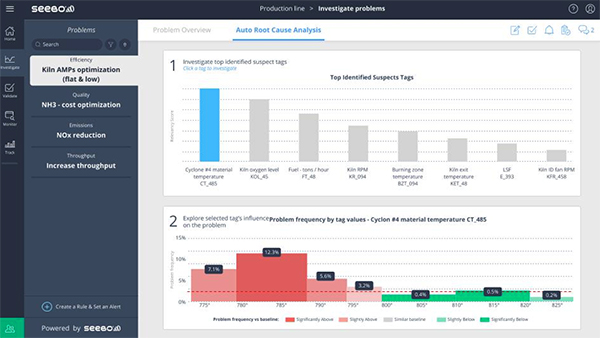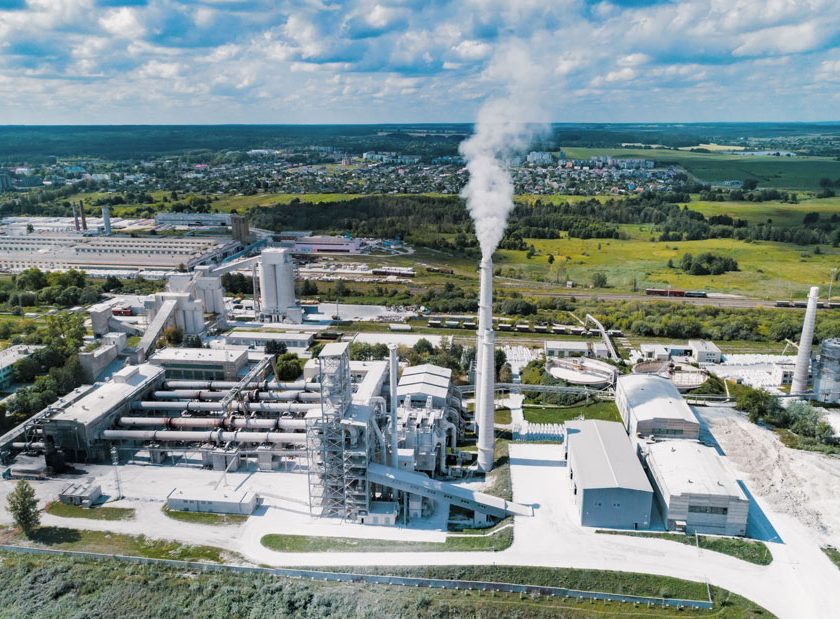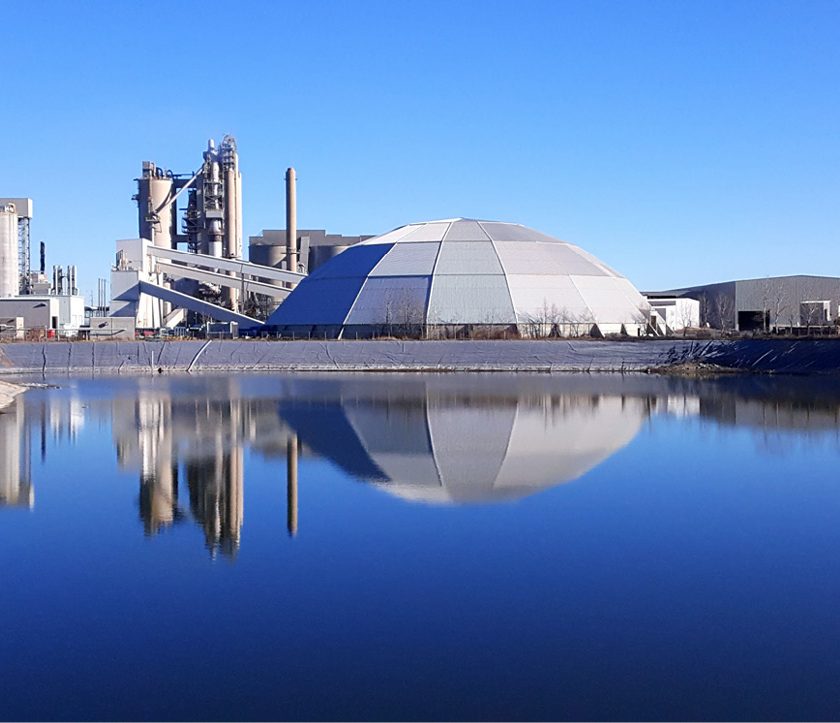Yes, It’s Possible To Run An Efficient Plant On Alternative Fuels. But In The Race To Zero Emissions There Are Many Challenges.
By Mark S. Kuhar
Alternative fuels have become a pressing issue for cement manufacturers, particularly in Europe, as governments and local authorities place increasing emphasis on green policies and decarbonization.
But in the race to zero emissions there are many challenges.
Firstly, since alternative fuels aren’t homogenous, they can create a lot of process instability. They also often contain high moisture content, which can limit kiln capacity. Then there’s the challenge of chlorine byproducts, and of course the cost – although this has been alleviated in many places by government incentives.
Emissions and production losses both stem from process inefficiencies. For these reasons, it could be concluded that alternative fuels necessarily cause a less efficient production process – and manufacturers must simply weigh these costs against the benefits (whether financial, where grants are available, or environmental).
However, at Seebo they have seen firsthand how many cement manufacturers experience periods of high efficiency using alternative fuels – indicating that they are capable of operating exceptionally, regardless of the fuel type.
That’s because where these Key Performance Indicators (KPIs) aren’t reached, it has nothing to do with alternative fuel usage per se – but rather stems from the very same process inefficiencies that cause precisely the same losses at cement plants which still use coal.
In short: process inefficiencies are causing your production losses, not alternative fuels. The real challenge is to eliminate those inefficiencies and find the optimal process settings to enable stable operations with or without alternative fuels.
Overcoming The Limits Of Human Decision Making
Cement manufacturing plants rely on human decision making. Your teams take dozens of manual decisions every single day, to ensure a stable, efficient process.
The problem is that human decision making is inherently limited. Even with the best process experts and production teams, it is impossible to analyze all the data, all the time – particular considering that cement production is a uniquely complex process, with many complications and dynamic factors, from raw material variances to traceability. And then there’s the fact that process inefficiencies are usually the result of complex interrelationships between multiple data tags.
Expert Systems Still Rely On Human Decision-Making
Expert Systems do provide some level of automation. But ultimately they rely on the decisions and calculations of your process experts. What’s more, Expert Systems can’t adapt to changes in the process – they need your process experts for that.
However you look at it, your teams are fighting a sisyphean battle against the odds to sift through the ever-changing sea of data and pin down the precise optimal process settings at any given time.
AI-powered decision-support tools – ensuring your teams make the right decisions
The solution lies in decision-support tools that use Artificial Intelligence to provide key insights to your manufacturing teams – from process experts to production teams.
From our work with leading manufacturers, we’ve found that a decision support tool must provide three key values to make a true impact on manufacturing processes:
- Reveal the hidden causes: Your process experts already have tools to confirm their existing theories – what they’re missing is the hidden causes of inefficiencies and production losses that they aren’t even aware of. Using automated root-cause analysis, a decision support tool can provide them with precisely that.
- Continuous, scalable, multivariate analysis of all the data: They also need the ability to continuously analyze all the data, all the time, while taking into account all the complex interrelationships between different points throughout the line. Decision support tools use supervised Machine Learning algorithms to understand the patterns of behavior that commonly lead to losses (you can learn more about the applications of AI and Machine Learning to manufacturing in this short guide.)
- Embedded process expertise: Finally, in cement manufacturing, the process is key. You can’t look at one point in isolation. A decision-support tool, driven by Artificial Intelligence, can provide you with insights – but those insights will only be relevant if the AI understands the full, unique complexities of the process.
If there is no embedded process expertise within the algorithm, the AI will simply analyze the data without the unique context – and come to the wrong or incomplete conclusions.
Reducing Production Losses And Emissions With AI
Let’s look at a short case study of a cement manufacturer that used automated root-cause analysis to significantly reduce production losses.
The manufacturer in question wanted to reduce Kiln AMP inefficiencies, which caused numerous process-related losses, including:
- Energy inefficiency.
- Lower clinker quality.
- Lower throughput.
- Kiln feed variances.
The kiln was actually achieving higher-than-average efficiency rates some 40% of the time. That means the potential for improvement is already there. The question is: how can they increase the amount of time the kiln is operating at those levels?

Revealing The Hidden Causes Of Process Inefficiencies
Using automated root-cause analysis, their process experts were able to identify the hidden causes of their production losses and gain clear recommendations on how to prevent those process inefficiencies.
Those recommendations are translated into real-time alerts, so the production teams know as soon as those inefficiencies are detected and can prevent losses before they occur.
First, Seebo unified all the data from the line into a single schema, where it’s enriched and cleansed – from raw material data, to process and quality data, to data on weather conditions and alternative fuels characteristics.
Next, Process-Based Artificial Intelligence embeds the algorithms with the context of the unique plant topology and expertise in the cement manufacturing process. This enables the algorithms to navigate through the unique complexities of each production process and truly understand the data in-context, providing a continuous, multivariate analysis that reveals important new insights that were previously hidden.
For example, the team discovered that when the cyclone material temperature is above 800 degrees, and simultaneously the kiln oxygen level was between 1.5% and 2%, the likelihood of a problem with the Kiln AMP increased very significantly.
This is an important insight that the process experts could never have figured out on their own – since both of those tags remained within their permitted ranges! It was only the unique combination of those two specific ranges of tag values that was causing the losses.
Process Mastership With Artificial Intelligence
Next, Seebo created Predictive Recommendations, which identify the optimal process settings. For example, the team now has recommended optimal values for the cyclone material temperature and kiln oxygen level, to minimize instances of Kiln AMP inefficiencies as much as possible without negatively impacting other production parameters.
These recommendations are then turned into Proactive Alerts, which are delivered to the production team via a simple, intuitive screen as soon as process inefficiencies occur. The alerts include a clear description of the root-causes, and Standard Operating Procedures, so production teams know exactly what to do to fix those issues before losses occur.
Using these new insights, the manufacturing teams can prevent process inefficiencies and greatly reduce costly production losses from quality, throughput emissions and energy.
You CAN Still Run An Efficient Plant
In conclusion, running an efficient cement plant has nothing to do with the fuel you use. By eliminating process inefficiencies and identifying the optimal process settings, cement manufacturers can run efficient, competitive operations using alternative fuel. Specifically:
- Reduce energy cost per ton clinker – 5.6%.
- Increase clinker quality – 4.2%.
- Increase kiln feed capacity – 3.3%.
- Reduce NOx emissions – 11.9%.
- Greater understanding of the production process.
- €780,000 extra profit on single line.
- €521,000 in energy savings on a single line.
Information courtesy of Seebo, www.seebo.com.



